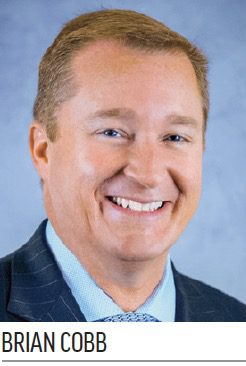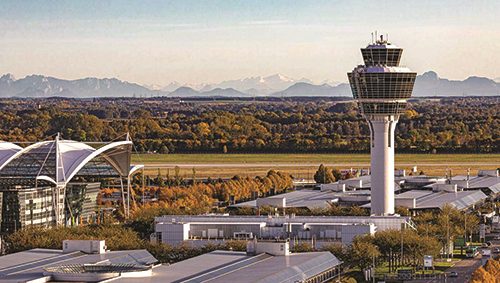Savvy airport officials know that it makes sense to help senior-level executives improve their leadership skills and broaden their perspectives. Such training helps the executives and airports. Cincinnati/Northern Kentucky International Airport (CVG) put a global spin on its development program by sending one executive to experience life at a European airport and another to observe operations at an Asian airport.
Savvy airport officials know that it makes sense to help senior-level executives improve their leadership skills and broaden their perspectives. Such training helps the executives and airports.

Cincinnati/Northern Kentucky International Airport (CVG) put a global spin on its development program by sending one executive to experience life at a European airport and another to observe operations at an Asian airport. Both worked through an exchange program developed by Airports Council International (ACI).
The organization’s Executive Leadership Exchange Programme (ELEP) is designed to support succession development at member airports by facilitating domestic and international exchanges. Candace McGraw, chief executive officer at CVG, was an early proponent of the program. As chair of ACI North America, she worked with the chair of ACI Europe—the chief executive officer of Munich Airport (MUC)—to coordinate an international ELEP pilot between the two airports in fall 2018. McGraw later worked with another colleague at Singapore Changi Airport (SIN), who serves as the chair of ACI Asia Pacific, to coordinate another exchange for summer 2019.
|
facts&figures Project: Executive Leadership Exchange Program Developer: Airports Council Int’l Pilot Participant: Cincinnati/Northern Kentucky Int’l Airport Airports Visited: Munich Airport (2 weeks); Singapore Changi Airport (1 week) Combined Cost for Both Trips: $10,000-$12,000 Funded by: Cincinnati/Northern Kentucky Int’l Airport Key Benefits: Participants gained wider perspective by experiencing operations at world-class airports & developing strong relationships with their executive counterparts. Noteworthy Lessons: Munich Airport operates as 16 separate profit-oriented subsidiaries; Changi Airport Group has impressive concessions programming, including a large entertainment complex connected via tram & walkways to Singapore Changi Airport |
“By taking advantage of an opportunity to immerse themselves in a different structure or business model, the intent of ELEP was for our industry’s top future leaders to gain critical insights and bring home new and innovative ideas,” says McGraw.
She selected Scott Gibbons, the airport’s vice president of business administration, for the two-week pilot at MUC.
“Candace and I thought this would be very helpful for our airport, and would give some of our senior staff an opportunity to see how other airports in the world operated,” Gibbons says. “From a personal standpoint, I always have been interested in an international exchange to a world-class airport. I was very excited for this opportunity.
“Munich worked out very well,” he continues. “It consistently is ranked among the best airports in the world. It gets a lot of visits from officials from other airports, and its staff has experience showing people around.”
The schedule for the visit was largely developed by MUC, with input from CVG. “My primary goal was to gain exposure in departments or functions where I had no previous experience,” Gibbons says.
Josef Manhart, from MUC’s Corporate Communications Department, arranged for Gibbons to visit a variety of departments, including Security, Fire Protection, Corporate Communications, Quality Management, Human Resources, Real Estate Management, Insurance Systems, Political Affairs, Corporate Development, Professional Training Policies and Digital Development.
Gibbons also met with Michael Kerkloh, Ph.D., the airport’s long-time chief executive who recently retired.
“It really helped that my agenda was pretty much finalized before I flew over there,” he says.

Key Takeaways From Germany
Gibbons says that seeing how another world-class airport is managed was a very valuable experience. “MUC is an incredible airport in many ways. It operates quite differently when compared to CVG and other airports in the United States,” he states. “In this country, most airports are owned and operated by some form of government—state, county or city—or are a quasi-public independent authority such as CVG. But MUC’s ownership and structure are different, having 16 different subsidiaries that operate as separate business-related entities. Each subsidiary is very profit-oriented. It showed me the potential for U.S. airports to evolve from a traditional government model to a more business-like model, reflecting what we really are.”
 The experience also opened Gibbons’ mind to new possibilities regarding customer service and operational functions. “I think there are several things we can do to improve our efficiencies here, and I am excited to help develop those in the future,” he states. “What MUC has been able to do to corporate IT functions and cybersecurity, as well as to provide a cohesive travel experience by operating its airport hotel under a well-known brand, was certainly eye-opening. It has encouraged me to think about airport innovation in a new way.”
The experience also opened Gibbons’ mind to new possibilities regarding customer service and operational functions. “I think there are several things we can do to improve our efficiencies here, and I am excited to help develop those in the future,” he states. “What MUC has been able to do to corporate IT functions and cybersecurity, as well as to provide a cohesive travel experience by operating its airport hotel under a well-known brand, was certainly eye-opening. It has encouraged me to think about airport innovation in a new way.”
Perhaps most importantly, Gibbons forged strong relationships with several people at MUC, and believes that the exchange program will help executives from other airports do the same. “It gives participants a chance to broaden their networks and relationships in a variety of international settings, and see how other first-rate airports operate,” he remarks.
Singapore-Style Concessions
Brian Cobb, chief innovation officer at CVG, visited Singapore’s Changi Airport (SIN) for one week last summer, and met with leaders and staff of Changi Airport Group.
“This is consistently ranked as one of the best airports in the world, so I was very excited to visit it and learn about their operations,” Cobb says. “Like Munich, SIN is used to hosting airport officials from many countries.”
 Kris Mok, manager of corporate communications for Changi Airport Group, planned meetings for Cobb from 9 a.m. to 6 p.m. every day. He spent time in Customer Service, Operational Control, Air Service Development, Human Resources, Baggage Handling Systems, Information Technology, Innovation and other key areas that support the overall organizational structure of Changi Airport Group.
Kris Mok, manager of corporate communications for Changi Airport Group, planned meetings for Cobb from 9 a.m. to 6 p.m. every day. He spent time in Customer Service, Operational Control, Air Service Development, Human Resources, Baggage Handling Systems, Information Technology, Innovation and other key areas that support the overall organizational structure of Changi Airport Group.
Cobb was particularly interested in SIN’s concessions program. “This airport hosts about 70 million visitors a year, and most of them have lengthy layovers before their connecting flight departs. Therefore, with such a captive audience, the airport really emphasizes experiences, and promotes its retail shops and restaurants,” he explains. “Many of these establishments sell high-end merchandise, and are very profitable, supporting much-needed revenue diversification.”
One of SIN’s newest retail and entertainment attractions is Jewel, a five-story entertainment complex (developed through a public-private partnership) that is open to the general public as well as air travelers.
“I was told that this is a favorite destination of local residents, and was very impressed when I visited it,” Cobb says. “It is very modern-looking, clean and has a ton of interesting shops, restaurants and other attractions—including a rainforest and the world’s largest indoor fountain as its centerpiece.”
Passengers can access Jewel from the main terminals via a tram or walkway. However, they have to exit the secure area, and therefore must pass through a security checkpoint to reenter the airport. This can cause problems, because connecting passengers sometimes lose track of time at the large mall and entertainment center, putting themselves at risk for missing their flights. The airport consequently advises passengers to return to the security areas at least two hours before their scheduled departures.
Beyond valuing his visits with various airport officials, Cobb also enjoyed meeting everyday people from Singapore. “I was really struck about how incredibly welcoming they are,” he says. “There are no language barriers, since English is a primary language. They are very forward-thinking about everything from quality customer experience to a culture that values work-life balance.”
 Cobb also noticed that Changi Airport Group maintains a progressive and collaborative relationship with government authorities and private enterprises. “They are quick studies on new technologies, such as autonomous maintenance equipment,” he remarks. “Changi Airport Group has successfully established a ‘sense of place’ by connecting its customers to Singapore’s diverse, proud culture.”
Cobb also noticed that Changi Airport Group maintains a progressive and collaborative relationship with government authorities and private enterprises. “They are quick studies on new technologies, such as autonomous maintenance equipment,” he remarks. “Changi Airport Group has successfully established a ‘sense of place’ by connecting its customers to Singapore’s diverse, proud culture.”
Overall, Cobb characterizes the experience as very rewarding. “It inspired me to work more collaboratively with talented airport executives and technology firms from other parts of the world,” he reflects. “Immediately upon my return to CVG, we sourced and procured the same autonomous unit used by Changi Airport Group for our own hard-surface floor cleaning and disinfecting.”
Highly Recommended
Already a strong advocate for ACI programs, McGraw is even more enthusiastic about these types of opportunities after getting strong positive feedback from Cobb and Gibbons.
“This program has afforded Scott and Brian—and hopefully many others in the future—the chance to share best practices, increase business acumen and forge connections that will benefit themselves and CVG for many years to come,” she remarks. “I am very optimistic about its long-term viability.”
Editor’s Note: To date, overseas airports have participated as hosts in the ACI exchange program but not as guests. Officials from CVG note that they would welcome the opportunity to extend the same gracious hospitality their executives received at Munich Airport and Singapore Changi Airport.



